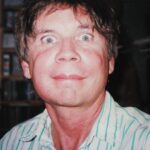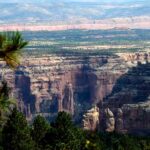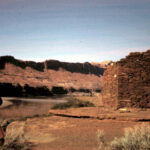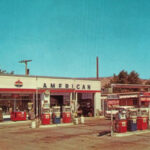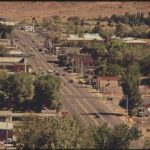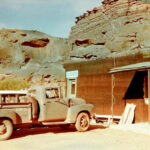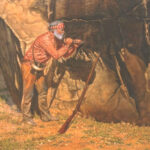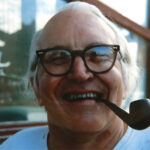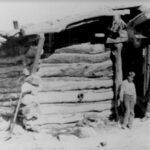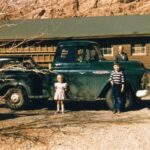
In 1989, my own seasonal ranger “career,” (if you could call it that) had ended, much to the relief of most park managers over the GS-7 pay level. But I still maintained good friendships with some of the older NPS staff, many of whom had retired years earlier but who had decided to live in Moab. I was particularly blessed to call two park veterans, Lloyd Pierson and Lyle Jamison, as dear friends. While newer park personnel loathed my irreverent, outspoken side, Lyle and Lloyd appreciated it. In fact, Lloyd’s humor was somewhat biting, and he was always willing to speak his mind, and let the chips fall where they may. He gave new meaning to the expression “unbridled candor.” It’s why, so many years ago, I concluded that, “When I grow up, I want to be just like Lloyd Pierson.” I’m still working on it.
Lloyd Pierson was the Chief Ranger at Arches from 1956 to 1961. He and Superintendent Bates Wilson oversaw the Mission 66 project during those most tumultuous years. The building of a new road was inevitable, and so both men played a role in determining the new highway alignment in a way that would have the least impact on the park they both loved.
Lyle Jamison worked as the Monument administrative officer from 1959 to 1960, but as they both later explain in this story, his duties in those days were “wide and varied.” . Lyle took another job in the NPS system that year, but a decade later returned to the newly formed Canyonlands National Park. It was Lyle who oversaw the hiring of seasonal rangers at Arches. I had signed on as a volunteer in the winter of 1975-76 but applied for the Arches seasonal campground job and often stopped by the old headquarters office downtown to check on my status. Using every technique possible, I told him that at volunteer pay I could not sustain myself on a diet of peanut butter and jelly sandwiches. Finally one day in March I poked my head in his office and Lyle looked up and grinned, “Stiley!”
…Lloyd retired from the Park Service a few years before my arrival but was a well-known face in Moab. A historian by trade, Pierson was an active board member of the Moab Museum and his frequent letters to the Moab Times-Independent were legendary. Lyle retired from government service just a few years after my arrival. But like Lloyd, he was hooked on Moab. He and his wonderful wife Lois bought a home in Spanish Valley and stayed active in local issues related to the parks.
When I decided to start The Zephyr, I was anxious to use it as a way of keeping and preserving the history of Southeast Utah. The first two people I sought out were Lloyd and Lyle. One cold morning in January 1989, I coerced both of these guys to take a ride with me through Arches to remember and recall the “good old days,” and observe the changes that have occurred over the years. We all bundled into my 1963 Volvo and I sat a tape recorder on the dashboard. I pushed the record button and off we went.. The overriding theme was: What’s changed? What’s here now that wasn’t here then? How different does this place feel to you? For the next hour and a half, they talked and I mostly listened…
Read more →
